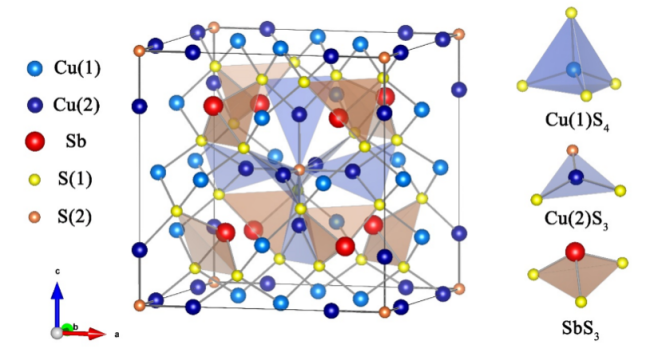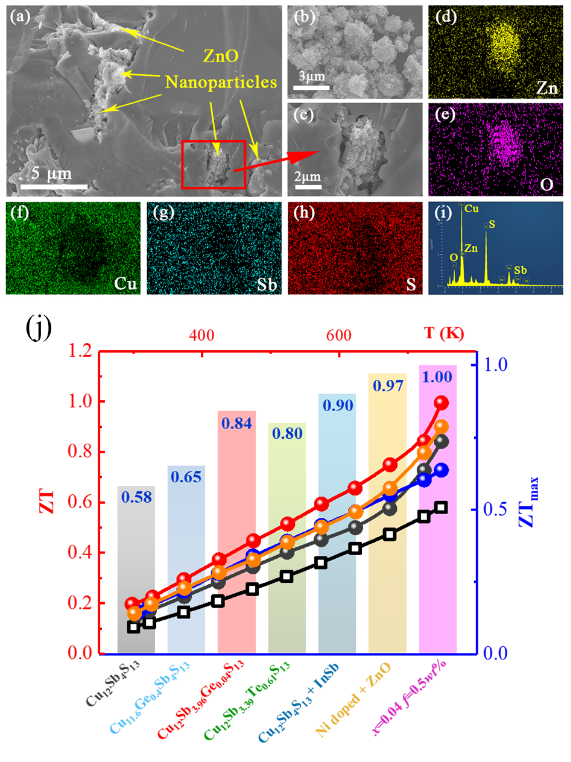
Chinese researchers annouced they had achieved high thermoelectric performance of Cu12Sb4S13 tetrahedrites by Ge doped at Sb site and introducing of ZnO to ulterior optimize the electrical and thermal transport properties simultaneously.
This work was done by QIN Xiaoying and his team with Institute of Solid State Physics (ISSP), Hefei Institutes of Physical Science of the Chinese Academy of Sciences. And they obtained the maximum ZT of ~1.0 at 750 K for Cu12Sb3.96Ge0.04S13-0.5 wt.% ZnO sample through their study.
Alternative energy sources are highly demanded globally, and environmentally friendly thermoelectric technology is anticipated to generate electric power from waste heat. Thermoelectric material is actually a functional material with great market potential and broad application prospects.
Thermoelectric power generation systems use waste heat (such as from thermal power plants and automobile exhausts) to generate electricity, and realize the recycling of waste heat to improve the utilization rate of fossil energy.
Recently, Bi2Te3 and PbTe are considered to be the ideal thermoelectric material due to its conversion performance. However, in large scale industrial applications, they are restricted due to the low crust content of Te element and the pollution during preparation and use of Pb element. Henceforth, Pb and Te free materials Cu12Sb4S13 tetrahedrites attracted widespread attention as a promising, environmentally friendly thermoelectric material.
At the same time, Cu12Sb4S13 tetrahedrites, which is known to have intrinsically low, glass-like lattice thermal conductivity (0.5-1.00 Wm-1K-1 above room temperature) due to its complex crystal structure.
According to the study, the results demonstrated that Ge doped at Sb site could cause resonance distortion of state of density to improve the power factor and obtain a ~30% larger thermoelectric performance. In addition, it was a very promising approach for Cu12Sb4S13 tetrahedrites to improve the thermoelectric performance though increase the power factor by element doping firstly and then reduce the thermal conductivity by introducing nanoparticles.
This research was supported by the Natural Science Foundation of China, the National Key Research and Development Program from the Ministry of Science and Technology of China and the research contribution of the Super Computing Center of USTC.
The study, published in ACS Applied Materials & Interfaces, by QIN and his team may shed new light on this research area.

The crystal structure of tetrahedrites Cu12Sb4S13 (Image by HUANG Lulu)

(a)-(i) Microstructure of the cross section of the sample after composite ZnO nanoparticle under scanning electron microscopy (SEM); (j) ZT as a function of temperature for Cu12Sb3.96Ge0.04S13- f wt.% ZnO (f = 0, 0.25, 0.5 ,1) compounds. (Image by HUANG Lulu)

86-10-68597521 (day)
86-10-68597289 (night)

52 Sanlihe Rd., Xicheng District,
Beijing, China (100864)

